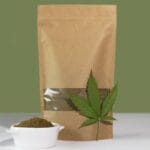Federal law prevents doctors from writing medical cannabis prescriptions. Likewise, pharmaceutical companies do not produce medical cannabis tablets and capsules. So how do patients get the THC they want? It depends on their preferences. There are multiple delivery methods for medical cannabis.
State laws vary in terms of what delivery methods are allowed. The one thing most medical cannabis states have in common is that they do not allow smoking for medical purposes. That is the case in Utah, where Beehive Farmacy operates two medical cannabis dispensaries in Salt Lake City and Brigham City.
Here are the five most common medical cannabis delivery methods, according to Beehive personnel:
1. Vaping
Smoking is the preferred delivery method among recreational users in permissive states. It is preferred because inhaling marijuana smoke gets THC into the bloodstream almost instantly. In states like Utah, where smoking is prohibited, the next best thing is vaping.
Vaping involves heating a THC-infused liquid to a temperature high enough to convert it into vapor without actually burning it. Vaporized THC is inhaled just like smoke would be. Therefore, its effects are almost instant as well.
2. Dry Heating
Dry heating is similar to vaping except that marijuana flower is used as opposed to a THC-infused liquid. A special heating device heats the plant material just enough to begin releasing its cannabinoids and terpenes. Dry heating produces euphoric effects just as quickly as vaping.
3. Under the Tongue
There are some medical cannabis users who don’t like the idea of inhaling THC in any form. Both vaping and dry heating are off the table for them. But what if they still want a quick acting medicine? They can use a concentrated oil known as a tincture. It is placed under the tongue.
The tissue under the tongue is rife with blood vessels. Therefore, a drop of tincture placed under the tongue is quickly absorbed through the skin and into the bloodstream. Tinctures do not work as fast as inhalation, but patients still begin feeling the effects of their medicine within minutes.
4. Gummies and Other Edibles
Yet another popular option among medical cannabis users are edible products. More often than not, edibles take the form of THC gummies. The gummies can be flavored to taste just like candy. You are talking flavors like cherry, grape, chocolate, root beer, etc.
Utah limits edible products to gummies, capsules, and tablets. Other states are okay with THC-infused cookies and cakes. Needless to say, there is something for everyone in the most liberal states.
The big downside of edibles is that it can take several hours before a patient begins feeling the effects. On the positive side, once those effects kick in, they tend to last quite a bit longer.
5. Transdermal Applications
Rounding out the list are transdermal applications. In simple English, these are topically applied creams and lotions. Transdermal applications are more common among medical cannabis products that feature CBD as the main cannabinoid. But there are THC-heavy products on the market as well.
Transdermal applications work like any other lotion or cream. You put a dab on your finger and rub it into the skin at the appropriate location. In most cases, these types of products are used for pain relief. You might rub it into a painful joint or your aching muscles.
There are plenty of other delivery methods out there. But due to state regulations, not all of them are available to medical cannabis patients. The five mentioned in this post are legal in most medical cannabis states. That could be why they are the most commonly utilized delivery methods.







